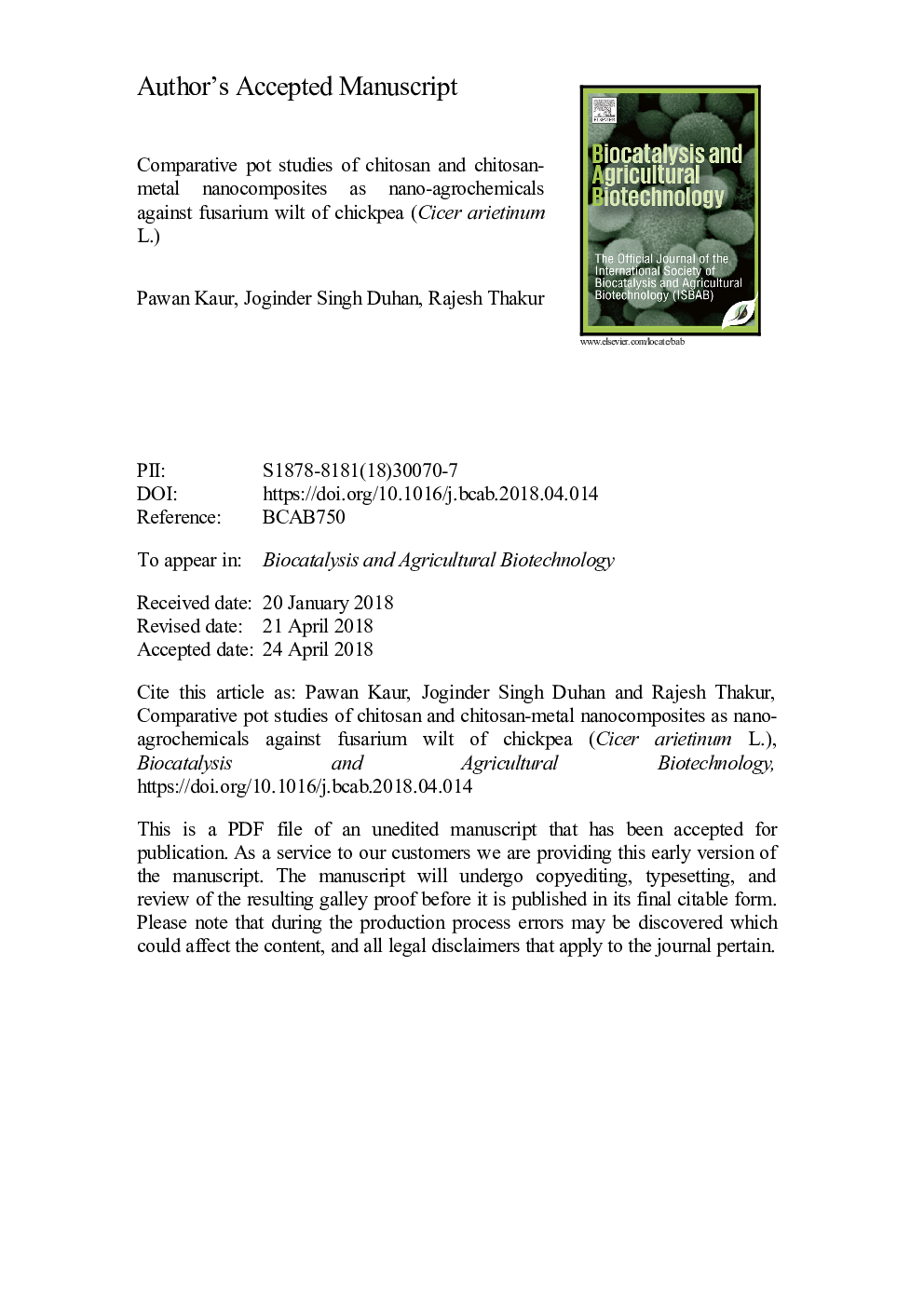| Article ID | Journal | Published Year | Pages | File Type |
|---|---|---|---|---|
| 8405860 | Biocatalysis and Agricultural Biotechnology | 2018 | 17 Pages |
Abstract
Fusarium wilt is a seed borne and soil borne disease of chickpea caused by Fusarium oxysporum f. sp. ciceri (FOC). In this work, chitosan and their nanocomposites were evaluated as antifungal agents against FOC, in vitro as well as in vivo. Among these, chitosan copper oxide nanocomposites (Ch-CuO) and chitosan-zinc oxides nanocomposites (Ch-ZnO) were found to be the most effective against FOC at all recommended concentrations i.e. 50, 100 and 200â¯Âµg/ml. Chitosan nanoparticles (Ch) and chitosan-silver nanocomposites (Ch-Ag) were found to be moderately effective but more efficient than standard fungicide i.e. copper-oxy-chloride (CuOCl). Based on in vitro results, 100â¯Âµg/ml concentration of all nanoformulations (NFs) was selected for in vivo studies in potted plants. The highest wilt disease reduction was observed in Ch-CuO (46.67%) followed by plants treated with Ch-ZnO (40%) as moderately effective, while Ch-Ag and Ch caused only 33.33% reduction in wilt incidence as less effective. All nanoformulations showed good antifungal efficacy and inhibited the pathogen as well as found to promote the growth of chickpea plants as compared to untreated plants.
Related Topics
Life Sciences
Agricultural and Biological Sciences
Agricultural and Biological Sciences (General)
Authors
Pawan Kaur, Joginder Singh Duhan, Rajesh Thakur,
